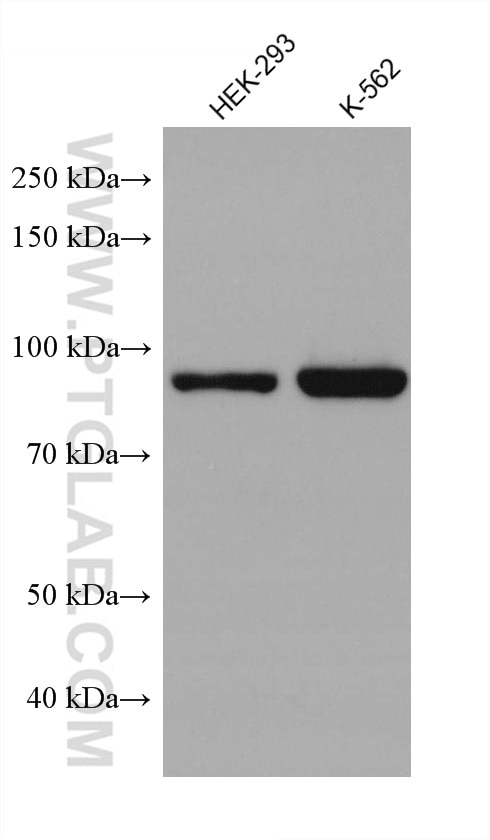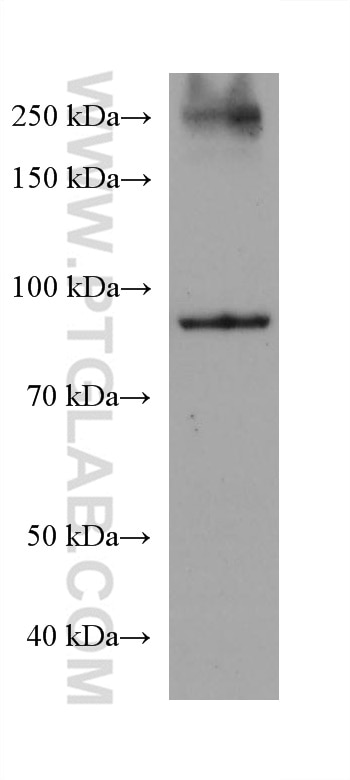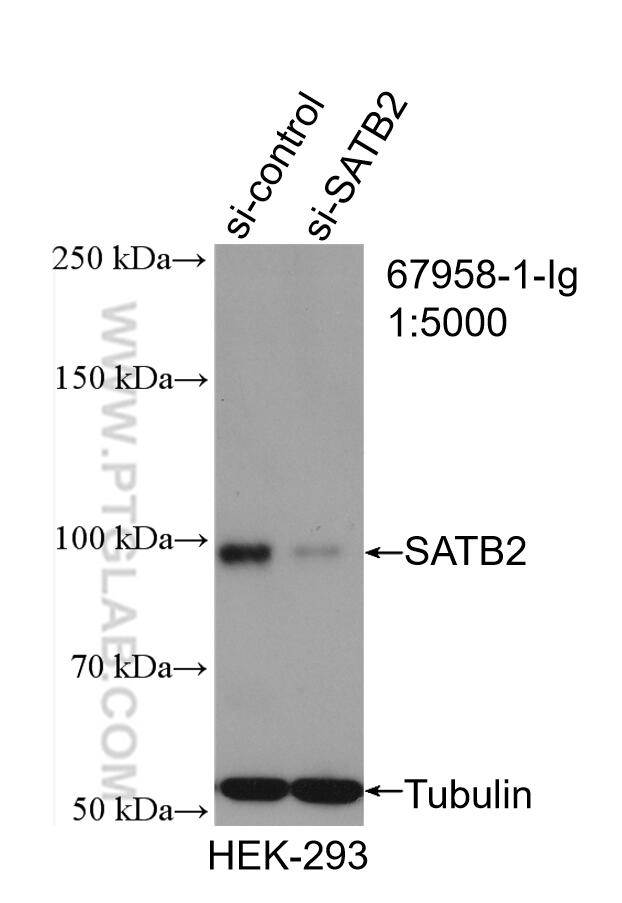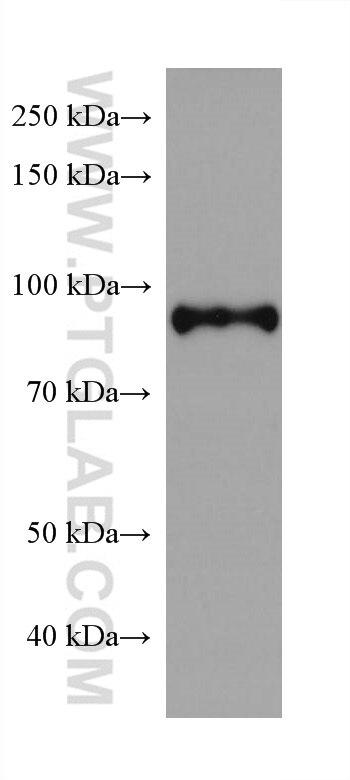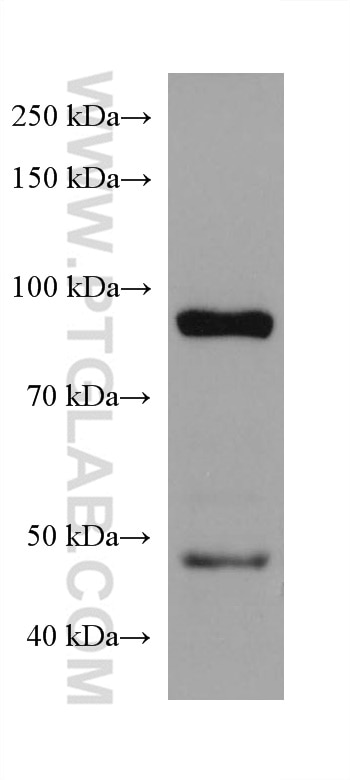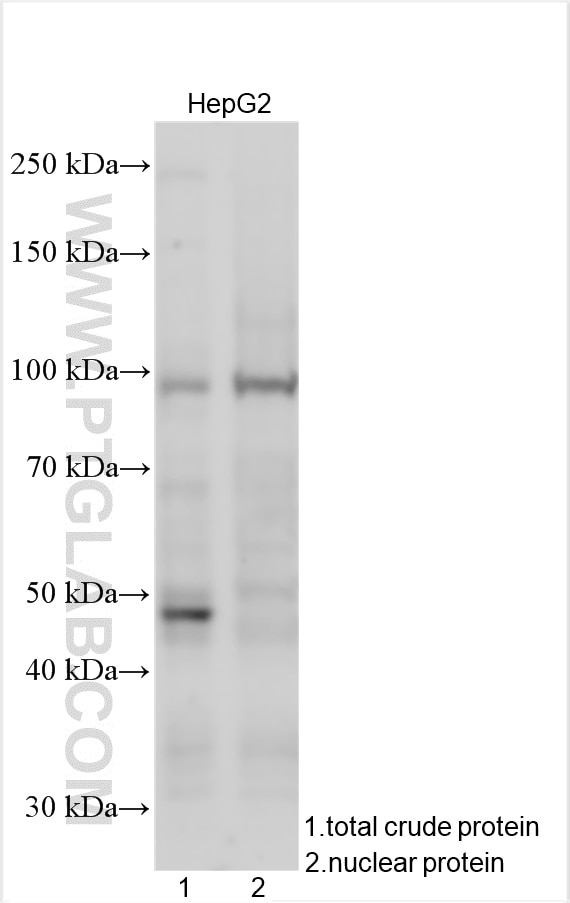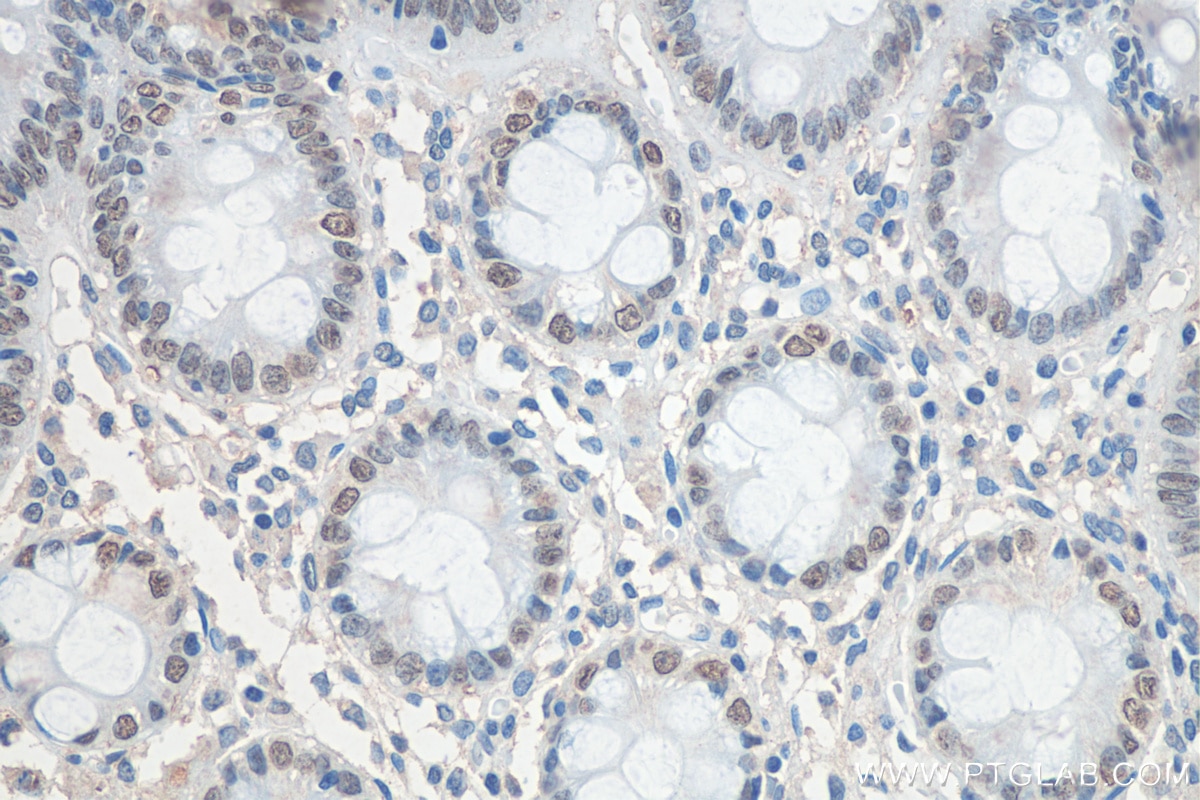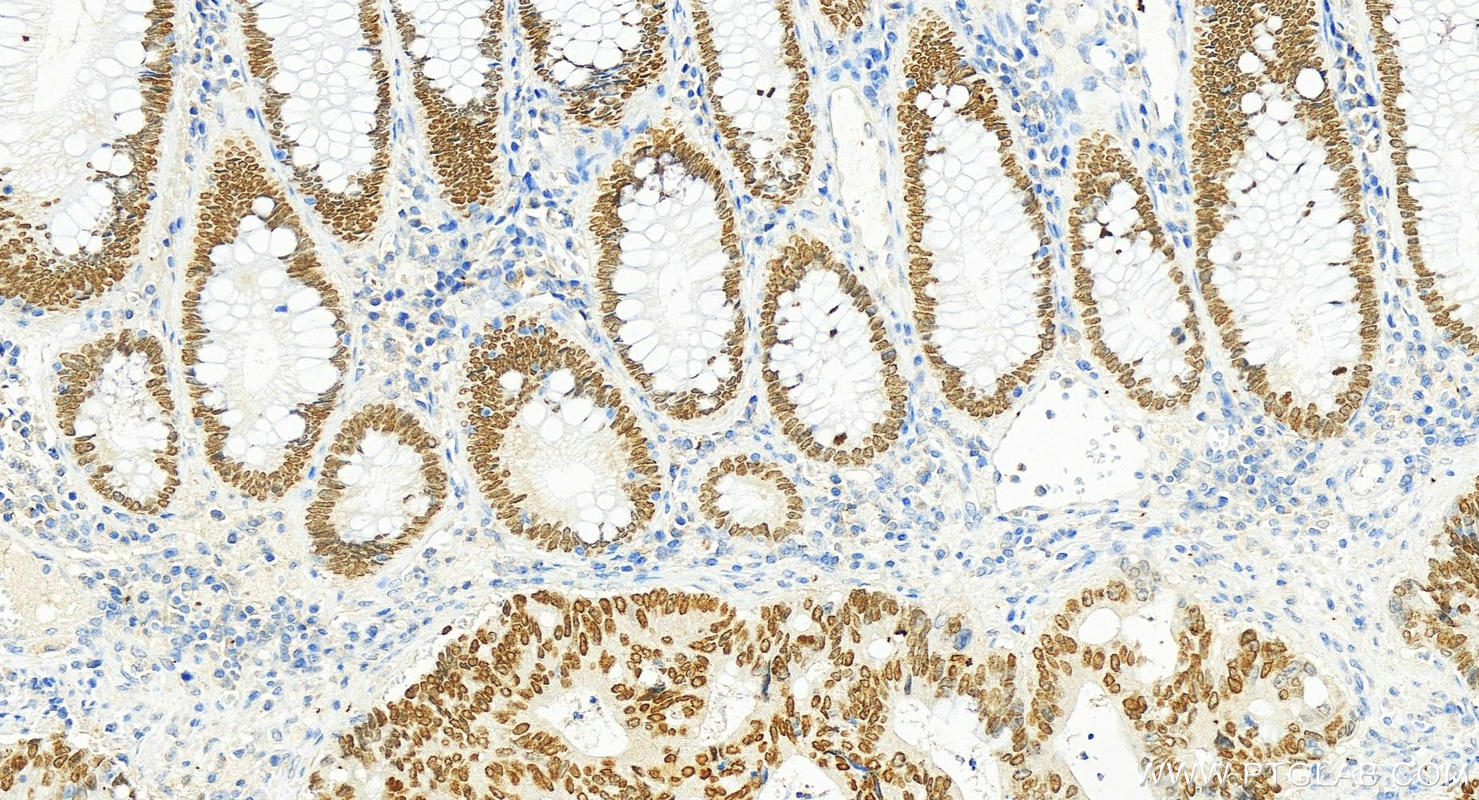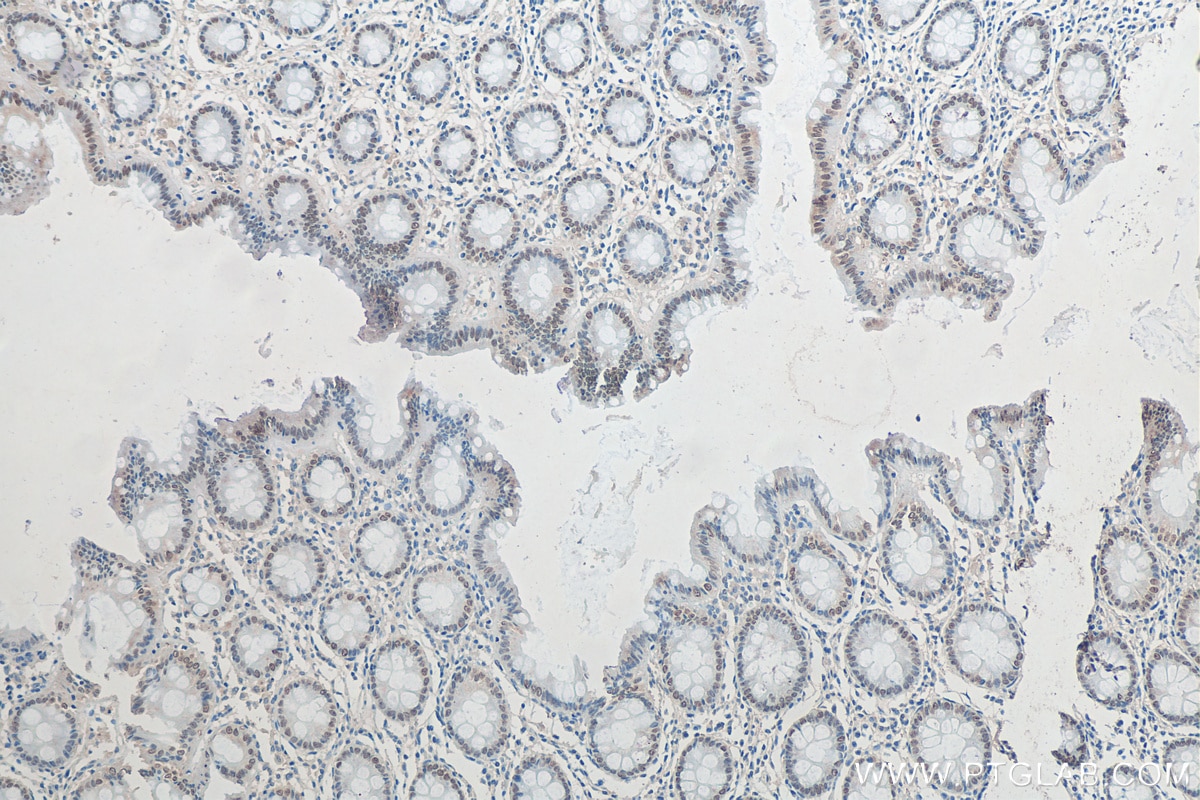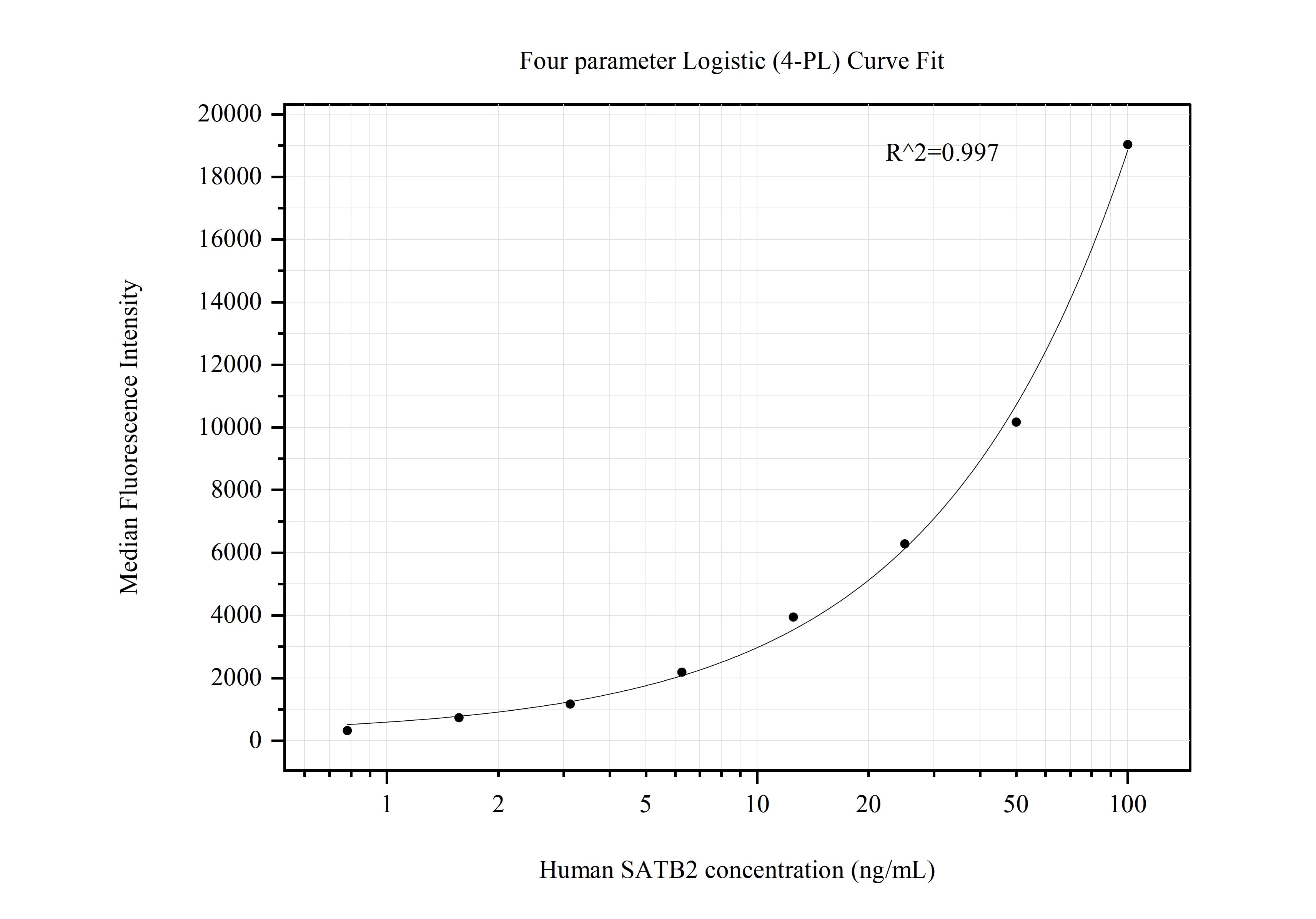- Phare
- Validé par KD/KO
Anticorps Monoclonal anti-SATB2
SATB2 Monoclonal Antibody for WB, IHC, Cytometric bead array, Indirect ELISA
Hôte / Isotype
Mouse / IgG1
Réactivité testée
Humain, souris
Applications
WB, IHC, Cytometric bead array, Indirect ELISA
Conjugaison
Non conjugué
CloneNo.
2F8E2
N° de cat : 67958-1-PBS
Synonymes
Galerie de données de validation
Informations sur le produit
67958-1-PBS cible SATB2 dans les applications de WB, IHC, Cytometric bead array, Indirect ELISA et montre une réactivité avec des échantillons Humain, souris
| Réactivité | Humain, souris |
| Hôte / Isotype | Mouse / IgG1 |
| Clonalité | Monoclonal |
| Type | Anticorps |
| Immunogène | SATB2 Protéine recombinante Ag17237 |
| Nom complet | SATB homeobox 2 |
| Masse moléculaire calculée | 733 aa, 83 kDa |
| Poids moléculaire observé | 85-100 kDa |
| Numéro d’acquisition GenBank | BC098136 |
| Symbole du gène | SATB2 |
| Identification du gène (NCBI) | 23314 |
| Conjugaison | Non conjugué |
| Forme | Liquide |
| Méthode de purification | Purification par protéine G |
| Tampon de stockage | PBS only |
| Conditions de stockage | Store at -80°C. 20ul contiennent 0,1% de BSA. |
Informations générales
SATB2, also named as KIAA1034, belongs to the CUT homeobox family. SATB2 binds to DNA at nuclear matrix- or scaffold-associated regions. STAB2 recognizes the sugar-phosphate structure of double-stranded DNA. SATB2 is a transcription factor controlling nuclear gene expression, by binding to matrix attachment regions (MARs) of DNA and inducing a local chromatin-loop remodeling. SATB2 acts as a docking site for several chromatin remodeling enzymes and also by recruiting corepressors (HDACs) or coactivators (HATs) directly to promoters and enhancers. It is required for the initiation of the upper-layer neurons (UL1) specific genetic program and for the inactivation of deep-layer neurons (DL) and UL2 specific genes, probably by modulating BCL11B expression. It is a repressor of Ctip2 and regulatory determinant of corticocortical connections in the developing cerebral cortex. SATB2 may play an important role in palate formation. SATB2 acts as a molecular node in a transcriptional network regulating skeletal development and osteoblast differentiation. SATB2 has two isoforms produced by alternative splicing with the MW of 70 kDa and 83 kDa. It can be detected as 85-105 kDa by sumo modification (PMID: 14701874, PMID: 35140581).
